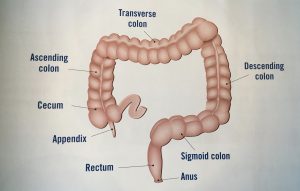
The Major Types of Rectal Cancer Surgeries | For Stage 1 – Early Stage 4 Patients
Hello! Last week I mentioned that this week’s video would be about my surgery, but I thought before I get into the details of the slicing and dicing of my surgery for rectal cancer that I should maybe describe what the surgery actually was a little bit more. Then you’ll have a better idea of what the surgery entails before I start going into the details of what it was like to be a patient going through this surgery. If you don’t remember me mentioning that, well you must be new here. Welcome to Life as a Cancer Survivor. I created this channel to help those that have been diagnosed with Colorectal Cancer better understand what they might expect as they’re going through treatment and even after treatment, plus, to help promote awareness of this crappy disease. My name is Jelena, and in May of 2016, I was diagnosed with Stage 3 Rectal Cancer. If you are new here, please make sure you’ve hit the subscribe button over here, or in the description below there’s also the link to subscribe so then you’ll never miss a new video. And now, on to all of the different surgeries for rectal cancer.
Early Stage Rectal Cancer Surgery
If the cancer is found at an early stage there are 2 options for surgery, neither of which require any incisions The first one is a polypectomy. This one is done during your routine colonoscopy. If the doctor finds a polyp during your preventative colonoscopy they will just take it out right then and you don’t have to go back for a separate surgery. However in the United States, as soon as that polyp is removed during the procedure it changes from just a preventative screening to a surgery, which means you could end up with a surprise bill in addition to the surprise that cancer was found in your colon. This can be especially hard on patients that are on Medicare that are already on a fixed income.
This is why advocates like myself have been working with the organization Fight Colorectal Cancer to close this federal loophole so that the procedure is covered 100%, even if a polyp is removed. The bill passed the House on December 12, 2019 and is now waiting for the Senate to pass it. It has a bi-partisan group of over 330 co-sponsors in the House, which means that the bill is “veto-proof” once it passes the Senate because there’s enough support to override a presidential veto. The bill currently has 60 Senators as co-sponsors, so we have the support, we just need that final push to bring it to a vote. If you would like to help get this passed, please contact your Senators and urge them to pass this. Here is the link that will take you directly to Fight Colorectal Cancer’s page and it has a short form, for you to fill out, and it even has a prewritten message to send directly to your Senators. They even take the legwork out of finding the contact information ’cause as soon as you fill in your address they will know who your two Senators are to send this message to. If you do send a message let me know in the comments below, we need all of the help that we can get.
Now to learn about the second type of surgery that can be done to remove early-stage rectal cancers, which, this one can also be done during a colonoscopy but some of the tissue from the rectal wall is removed also because the polyp has grown a little bit into the tissue. Just like the polypectomy, as soon as the local excision happens during your colonoscopy it changes the procedure from a preventative screening to a surgery, so you’re billed for a surgery. Both the polypectomy and local incision are done as outpatient procedures and require no hospital stay as long as everything goes according to plan.
Rectal Cancer Surgeries for later-stage patients
If the tumor is too large or it has grown too deep into the rectum wall, then there are 2 different options that are available depending on the location of the tumor. My tumor ended up being high enough in the rectum that I received a Lower Anterior Resection. Let me show you a picture of the colon and rectum again so that you’ve got a better idea of what I’m talking about here. In a Lower Anterior Resection, they cut out the part of the rectum that the cancer was in, and in my case, they also removed some of my colon. They then reconnect the remaining colon and rectum, which is called a resection. This surgery typically takes around 4 hours. This is done through either an open surgery or a minimally invasive surgery, also known as laparoscopically. In an open surgery, they cut a long incision down your abdomen to open you up for surgery.
For laparoscopic surgery, several small incisions are made in the abdomen and they call those incisions, ports. So through those incisions, these tube-like shaped things called

trocars are inserted into those incisions. Through the trocars, a small camera and specialized instruments are inserted into the abdomen, and your abdomen is inflated with carbon dioxide so that the surgeon has a better view and has more room to maneuver during the surgery. Even if your surgery is done laparoscopically you still may need an incision down your abdomen to remove those parts of the colon and rectum that have been cut out. The incisions are then closed with sutures or staples.
To allow the resected site a chance to heal before stool starts passing through there again, many patients also receive a temporary ileostomy. The length of time that you keep that temporary ileostomy is really up to your surgeon. Some like to reverse it after just a couple of weeks, others like mine wanted to wait until I was finished with my IV chemo before reversing it, which means that I had mine for around 7 months. Others that are on chemo for life may choose to keep their temporary ileostomy forever because taking a break from chemo means they’re taking a chance that their cancer is going to grow and/or spread.
The other type of surgery is called an Abdominal Perineal Resection, or APR. This surgery is done for patients where the tumor is so low in their rectum that the sphincter muscles can’t be preserved. In this surgery, the lower part of your colon, all of your rectum, and your anus are all removed. This is surgery can also be done either via an open surgery or laparoscopically. Even if the surgery is done laparoscopically, they still make an incision in your perineal area which is the area from your anus over to your genitals. And that’s the site where they remove the colon, rectum, and anus. Because your anus has been removed, that hole plus the perineal incision site are all closed up, giving you what many patients call a “Barbie butt.”
Patients that undergo an APR end up with a permanent colostomy because all of those end parts that you need to be able to poop normally have been removed. If you need a reminder on what a colostomy or an ileostomy are, I’ve got a video that describes what the different ostomies are. Just click on the link up here and that’ll take you over to refresh your memory on those.
Because the LAR and APR surgeries are much more involved surgeries, they typically require a 4-7 day hospital stay if there are no major complications. And that’s your summary on the different surgeries for Stage 1 through early Stage 4 Rectal Cancers. Next week I will be talking about my experience and the caretaker perspective on the day before and day of surgery. If you happen to have missed my treatment plan video, that’s right over here, you can click on that and it’ll take you right to it. Thanks so much for watching.
*This video was originally published on February 12, 2020